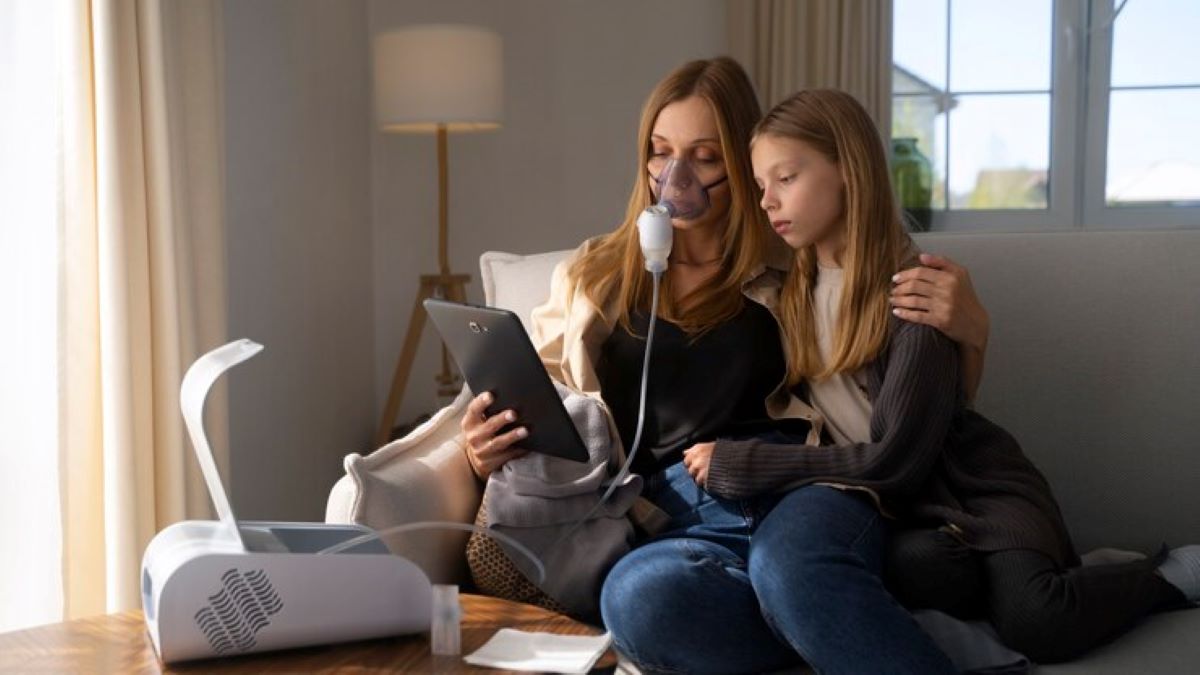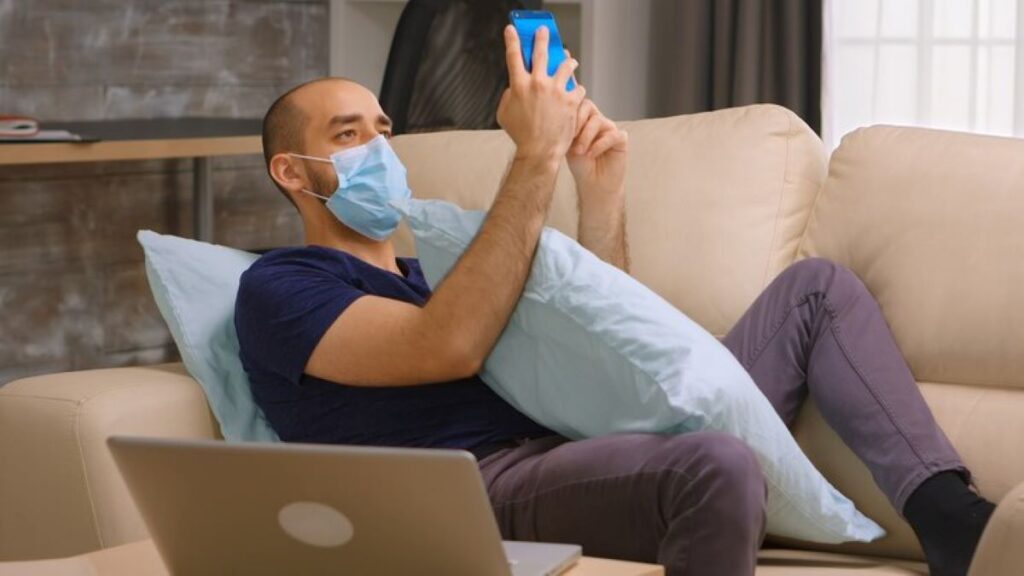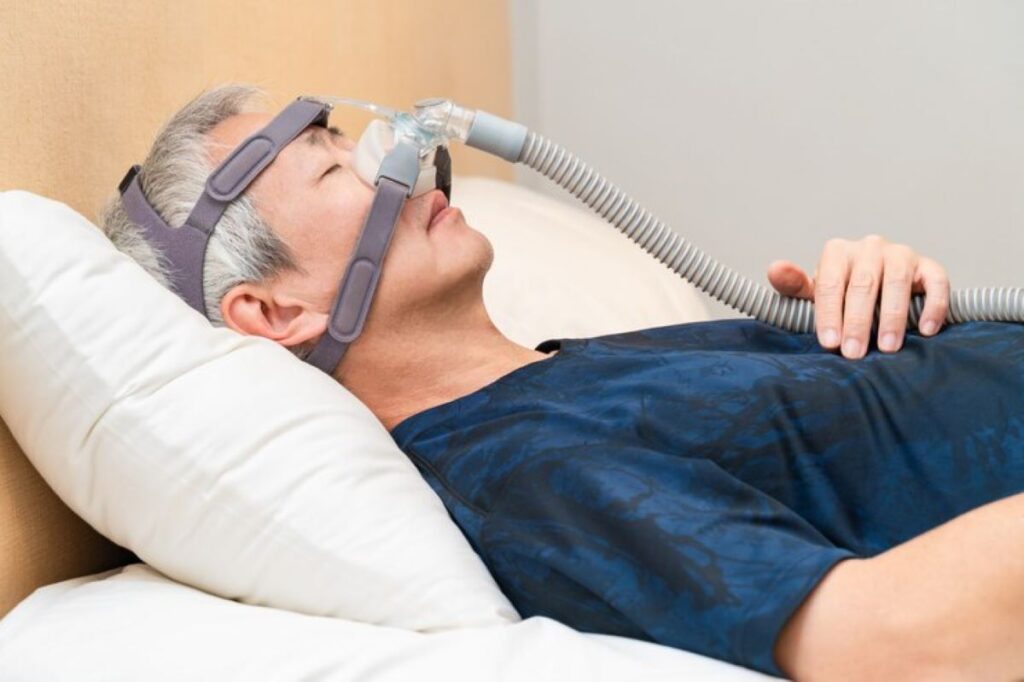
Sleep apnea affects millions of Australians, disrupting their sleep quality and impacting their daily lives. This common respiratory condition causes breathing interruptions during sleep, leading to fatigue, concentration problems, and serious health complications if left untreated.
CPAP therapy is the gold standard treatment for sleep apnea. It delivers continuous positive airway pressure to keep your airways open throughout the night. The effectiveness of this therapy relies heavily on one important factor: your CPAP mask.
Choosing the right CPAP Masks Australia can make a huge difference in your treatment experience. It can turn an uncomfortable process into a therapeutic one. On the other hand, using the wrong mask can lead to issues such as air leaks, skin irritation, and difficulty sticking to the treatment. But when you find the perfect fit, you’ll enjoy comfortable and effective therapy night after night.
Australia’s CPAP market offers an impressive variety of mask options, from lightweight nasal pillows to comprehensive full-face designs. Leading suppliers like Air Liquide Healthcare, with their extensive network of 152 service locations across Australia, provide access to quality masks from trusted manufacturers. You’ll find options suited to every sleeping style, facial structure, and breathing preference, making your journey to better sleep achievable and comfortable.
Understanding Sleep Apnea and CPAP Therapy
Sleep apnea affects approximately 1.5 million Australians, making it one of the most prevalent respiratory conditions across the country. This disorder occurs when your breathing repeatedly stops and starts during sleep, causing oxygen levels to drop and disrupting your natural sleep cycle. The condition manifests in three primary forms: obstructive sleep apnea (the most common type), central sleep apnea, and complex sleep apnea syndrome.
Continuous Positive Airway Pressure (CPAP) therapy serves as the gold standard treatment for managing sleep apnea symptoms. The system works by delivering a steady stream of pressurised air through a mask, keeping your airways open throughout the night. This constant airflow prevents the soft tissues in your throat from collapsing, which is the primary cause of breathing interruptions in obstructive sleep apnea.
The therapeutic benefits of CPAP therapy extend beyond preventing apnea episodes:
- Improved oxygen saturation levels during sleep
- Reduced daytime fatigue and enhanced alertness
- Better cardiovascular health through decreased strain on the heart
- Enhanced cognitive function and memory consolidation
Your CPAP mask plays a crucial role in delivering effective therapy. The mask creates an airtight seal around your nose, mouth, or both, ensuring that the pressurised air reaches your airways without leakage. The quality of this seal directly impacts therapy effectiveness, making proper mask selection essential for successful treatment outcomes and comfortable nightly use.
Types of CPAP Masks Available in Australia
The Australian market offers three primary CPAP mask types patients can choose from, each designed to accommodate different breathing patterns and comfort preferences. Understanding these options helps you select the most suitable mask for your therapy needs.
Nasal Masks
Nasal masks cover your nose completely, creating a seal around the nasal area whilst leaving your mouth free. These masks work best for individuals who breathe primarily through their nose during sleep.
Advantages:
- Lightweight and comfortable for extended wear
- Minimal facial contact reduces claustrophobia
- Suitable for active sleepers who move frequently
- Compatible with most CPAP machine pressure settings
Disadvantages:
- Ineffective for mouth breathers without a chin strap
- May cause nasal congestion or dryness
- Not suitable if you have frequent nasal blockages
Nasal Pillow Masks
Nasal pillow masks feature small cushions that seal directly at your nostrils, offering the most minimal design available. These masks appeal to users seeking maximum freedom of movement during sleep.
Advantages:
- Least intrusive option with minimal facial coverage
- Excellent for claustrophobic users
- Compatible with glasses and allows easy reading in bed
- Reduces mask leak issues common with other types
Disadvantages:
- Limited to lower pressure settings
- May cause nostril irritation with prolonged use
- Not suitable for mouth breathers
- Requires precise positioning for effective seal
Full Face Masks
Full face masks cover both your nose and mouth, making them the most comprehensive option for CPAP therapy delivery. These masks suit mouth breathers and those requiring higher pressure settings.
Advantages:
- Accommodates both nose and mouth breathing
- Effective for higher pressure requirements
- Reduces therapy interruptions from nasal congestion
- Maintains consistent therapy regardless of breathing pattern changes
Disadvantages:
- Larger design may feel bulky or claustrophobic
- Higher risk of mask leaks due to increased seal area
- May interfere with sleep position preferences
- Requires more frequent cleaning due to larger surface area
Factors to Consider When Choosing a CPAP Mask
Selecting the right CPAP mask requires careful evaluation of your personal characteristics and sleep patterns. Your individual needs will determine which mask type delivers the most comfortable and effective therapy experience.
Sleep Position Preferences
Your preferred sleep position significantly impacts mask selection. Side sleepers need masks with minimal bulk and secure headgear that won’t shift during movement. Nasal pillow masks excel in this scenario, offering freedom of movement without compromising seal quality. Back sleepers have more flexibility in choosing between nasal and full face options, as their stable position reduces the risk of mask displacement.

Breathing Patterns Matter
Mouth breathing during sleep necessitates a full face mask to capture both nasal and oral airflow. You’ll experience therapy failure if you choose a nasal-only mask whilst breathing through your mouth. Nose breathers can benefit from the lighter, less intrusive nasal or nasal pillow designs, which provide targeted therapy without covering the mouth area.
Facial Features and Accessories
Beards create sealing challenges for most CPAP masks. Dense facial hair prevents proper cushion contact with skin, leading to air leaks and reduced therapy effectiveness. You may need to trim your beard or select masks specifically designed for bearded users.
Glasses wearers should consider how mask straps interact with their frames. Some headgear designs accommodate glasses better than others, preventing uncomfortable pressure points during bedtime reading.
Professional Fitting Requirements
Proper mask fit determines therapy success. Sizing guides provide initial direction, but professional fitting ensures optimal seal and comfort. Air Liquide Healthcare’s extensive network of 152 locations across Australia offers expert fitting services, helping you achieve the perfect balance between effective therapy and comfortable wear throughout the night. Check out more about Buy CPAP Mask Australia: Affordable Options for Every Budget.
Popular CPAP Machines in Australia for 2025
The Australian market offers an impressive selection of CPAP machines Australia 2025 brings to sleep apnea patients, ranging from premium Swiss engineering to cost-effective solutions that don’t compromise on essential functionality. You’ll find machines designed to meet every budget and requirement, with manufacturers focusing heavily on user comfort and treatment effectiveness.
Premium Options
The Löwenstein Prisma20A stands out as the flagship Swiss-made device that has earned recognition for its exceptional quietness and precision engineering. This machine operates at whisper-quiet levels, making it ideal for light sleepers or couples sharing a bedroom. The Prisma20A features advanced auto-adjusting pressure algorithms that respond to your breathing patterns throughout the night, ensuring optimal therapy delivery without over-pressurisation.
Key features of the Prisma20A include:
- Ultra-quiet operation below 26 dBA
- Precise pressure delivery with 0.1 cmH2O accuracy
- Integrated humidification system
- Comprehensive data tracking capabilities
- Robust build quality with extended warranty coverage
Budget-Friendly Alternatives
The BMC Luna G3 represents excellent value for money without sacrificing reliability. This machine provides consistent fixed-pressure therapy with user-friendly controls and a compact design that suits most bedside tables. You’ll appreciate its straightforward operation and dependable performance night after night.
The Sefam S.Box offers another economical choice that delivers reliable functionality for patients requiring basic CPAP therapy. This French-manufactured device combines affordability with proven therapeutic effectiveness, making it accessible for patients on tighter budgets.
Both budget options feature:
- Reliable pressure delivery systems
- Basic data recording capabilities
- Compact, travel-friendly designs
- Essential safety features and alarms
- Competitive warranty support from Australian distributors
These machines cater to different patient needs while maintaining the therapeutic standards required for effective sleep apnea treatment across Australia’s diverse healthcare landscape.
Key Features to Evaluate in a CPAP Machine
When selecting your CPAP equipment, understanding the essential CPAP machine features helps you make an informed decision that aligns with your specific therapy needs and lifestyle requirements.
Pressure Delivery Modes
Fixed Pressure CPAP machines deliver a constant air pressure throughout the night, determined by your sleep study results. These units offer simplicity and reliability, making them ideal if you have consistent pressure requirements and prefer straightforward operation.
Auto-adjusting CPAP (APAP) machines continuously monitor your breathing patterns and automatically adjust pressure levels as needed. You benefit from personalised therapy that responds to position changes, sleep stages, and varying obstruction levels. APAP technology proves particularly valuable if your pressure needs fluctuate or if you’re still determining your optimal settings.
Portability Considerations
Travel-friendly CPAP machines prioritise compact design without compromising therapy effectiveness. Key portability factors include:
- Weight: Units under 1.5kg offer genuine portability for frequent travellers
- Size dimensions: Compact footprint fits easily in carry-on luggage
- Power options: Battery compatibility and universal voltage support for international use
- Integrated humidification: Built-in water chambers eliminate separate components
Noise Level Performance
Modern CPAP machines operate at whisper-quiet levels, typically between 25-30 decibels. You’ll appreciate machines with advanced sound dampening technology, especially if you’re a light sleeper or share your bedroom. The Löwenstein Prisma20A exemplifies this quiet operation, whilst budget options like the BMC Luna G3 still maintain acceptable noise levels for comfortable sleep environments.
Quiet operation benefits both you and your sleeping partner, promoting better therapy compliance and relationship harmony. Visit https://www.betterhealth.vic.gov.au/health/conditionsandtreatments/sleep-hygiene to get more about sleep hygiene.
Where to Buy Quality CPAP Masks and Machines in Australia
Finding the right supplier for your CPAP equipment requires careful consideration of several key factors. Trusted Australian suppliers offer genuine products backed by comprehensive warranty support, ensuring you receive authentic equipment that meets Australian safety standards.
Air Liquide Healthcare stands out as a leading respiratory care provider in Australia, serving tens of thousands of sleep apnoea patients through their extensive network of 152 diagnostic and therapy service locations. Their established presence since 1995 demonstrates their commitment to delivering high-quality products and services to both patients and healthcare providers.
When you buy CPAP masks Australia from reputable suppliers, you gain access to:
- Genuine manufacturer warranties covering defects and performance issues
- Professional fitting services to ensure optimal mask selection
- Ongoing technical support for equipment maintenance and troubleshooting
- Access to replacement parts and consumables when needed
Trial periods represent one of the most valuable benefits offered by established suppliers. These programmes allow you to test different mask styles and machine settings in your home environment before committing to a purchase. Many suppliers provide 30-day trial periods, giving you sufficient time to assess comfort levels, seal effectiveness, and therapy compliance.
Reputable sellers also maintain relationships with sleep specialists and can coordinate with your healthcare provider to ensure your chosen equipment aligns with your prescribed therapy requirements. This collaborative approach helps guarantee successful treatment outcomes whilst minimising the risk of purchasing incompatible equipment.

Tips for Ensuring Effective Therapy Compliance with Your Chosen Equipment
CPAP compliance tips become essential once you’ve secured your equipment from a trusted supplier. Your journey to successful sleep apnea treatment depends heavily on how well you adapt to and maintain your chosen setup.
Experimenting with Different Mask Options
You should never settle for the first mask that seems adequate. Many Australian CPAP users discover their ideal fit only after testing multiple options. Start with the mask type recommended by your sleep specialist, but remain open to alternatives if comfort issues arise. Nasal pillow masks might work better for active sleepers, while full face masks could suit those who breathe through their mouth during sleep.
Essential Maintenance Practices
Your CPAP equipment requires consistent care to deliver optimal therapy results:
- Daily cleaning: Wash your mask cushion and headgear with warm, soapy water each morning
- Weekly deep clean: Disassemble all mask components for thorough sanitisation
- Monthly filter replacement: Replace disposable filters according to manufacturer guidelines
- Water chamber maintenance: Empty and refill your humidifier chamber daily with distilled water
Building Sustainable Habits
Establishing a consistent bedtime routine helps your body adapt to CPAP therapy more effectively. Keep your equipment in the same location each night, ensure proper mask positioning before sleep, and track your usage hours through your machine’s built-in monitoring system. Regular equipment checks prevent minor issues from becoming major compliance obstacles.
Conclusion
Choosing the right CPAP mask in Australia requires careful consideration of your individual sleep patterns, breathing habits, and facial features. The combination of a high-quality machine with a properly fitted mask tailored to your specific needs creates the foundation for successful sleep apnea treatment.
Your therapy success depends on finding equipment that you can comfortably use every night. Whether you select a nasal mask, nasal pillows, or full face mask, the key lies in achieving a secure seal without compromising comfort. The Australian market offers excellent options from trusted suppliers who provide warranty support and trial periods to ensure you make the right choice.
Remember that effective CPAP therapy transforms more than just your sleep quality—it improves your overall health, energy levels, and quality of life. Take time to research different options, consult with healthcare professionals, and don’t hesitate to try multiple mask styles before settling on your final selection.
CPAP Masks Australia: A Complete Guide for Buyers empowers you to make informed decisions that lead to better sleep and improved wellbeing for years to come.
FAQs About CPAP Masks and Sleep Apnea Treatment in Australia
Sleep apnea is a condition where breathing repeatedly stops and starts during sleep. It affects approximately 1.5 million Australians, disrupting sleep quality and daily functioning.
2. How does CPAP therapy help with sleep apnea?
CPAP therapy delivers continuous positive airway pressure through a mask, keeping your airways open and preventing breathing interruptions during sleep.
3. What types of CPAP masks are available in Australia?
The main types include nasal masks, nasal pillow masks, and full-face masks, each suited to different breathing patterns, sleep positions, and comfort preferences.
4. How do I choose the right CPAP mask for my needs?
Consider your sleep position, breathing patterns, facial features, and comfort preferences. Professional fitting services and trial programs can help find the optimal mask.
5. What are some popular CPAP machines available in Australia for 2025?
Premium machines like the Löwenstein Prisma20A offer advanced features and quiet operation, while budget-friendly options like the BMC Luna G3 and Sefam S.Box provide reliable therapy at lower costs.
6. Who are trusted suppliers of CPAP masks and machines in Australia?
Air Liquide Healthcare, EasyCPAP, and MyCPAP are leading suppliers offering genuine equipment, warranty support, and professional fitting services across Australia.
7. What maintenance is required for CPAP masks and machines?
Daily mask cleaning, weekly deep cleaning, monthly filter replacement, and regular humidifier maintenance are essential to ensure effective therapy and prolong equipment lifespan.
8. Are there CPAP options suitable for children?
Yes. Pediatric masks, like the MiniMe 2 nasal mask, are designed for children’s facial structures and include features such as softer cushions, lightweight frames, and safe, child-friendly designs.
9. How can I improve compliance and comfort with CPAP therapy?
Experiment with different mask types, establish a consistent bedtime routine, track usage through machine monitoring, and maintain proper mask hygiene to enhance therapy effectiveness.
